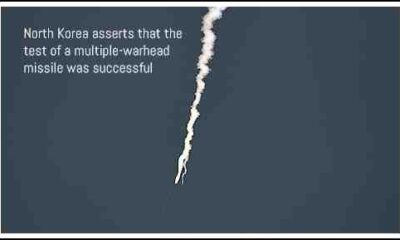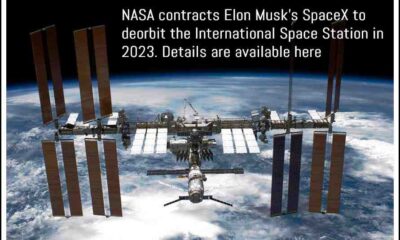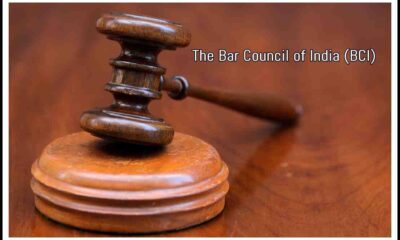bio tech
China’s probe returns to Earth with samples from the moon’s far side
Published
3 days agoon

Moon soil that had been retrieved earlier in the month following a safe landing on the moon’s South Pole-Aitken Basin was transported by China’s Chang’e-6 spacecraft
China has become the first nation to return samples from the far side of the moon with the landing of its Chang’e-6 lunar mission on Tuesday in the Inner Mongolia area of northern China.
According to state broadcaster CCTV, the reentry capsule touched down at 2:07 p.m. Beijing time (0607 GMT) on the side of the moon that always faces away from Earth. It was carrying lunar soil that the probe had collected earlier in the month. The landing was successful on the South Pole-Aitken Basin, an impact crater.
The head of the China National Space Administration, Zhang Kejian, declared the Chang’e-6 lunar mission successfully completed shortly after the capsule touched down. The mission’s success, according to Chinese President Xi Jinping, is a “landmark achievement” in China’s efforts to establish itself as a space and scientific powerhouse.
On May 3, the Chang’e-6 probe was launched from the Wenchang Satellite Launch Center on the southern island of Hainan using a Long March 5 rocket. The samples will be flown to Beijing for examination, according to CCTV.
The projected 2 kg of samples may or may not have been safely returned; either way, Chinese and international scientists will be meticulously examining the materials, hoping that they will provide fresh insights into the genesis of the Earth, moon, and solar system.
New minerals and more precise geological age ranges for the moon have been found thanks to samples returned from the near side of the moon by the Chang’e-5 mission.
With China’s lunar and space exploration program already in strong competition with the United States, the Chang’e-6 mission’s success may increase China’s appeal to international scientists and governments.
China’s removal of samples from the far side of the moon coincides with the growing urgency of militarization of space and the exploration of lunar resources, both of which are influenced by geopolitical tensions.
This year, NASA administrator Bill Nelson expressed alarm about China’s lunar exploration effort and detailed how the two countries were engaged in a growing “space race”.
A technical officer at the European Space Agency (ESA) who is collaborating with Chinese researchers on one of the Chang’e-6 payloads, Neil Melville-Kenney, stated, “I’m glad there has been a resurgence in this (space) race, but of course, I would like to see us racing alongside each other and together.”
European space agencies and scientists are collaborating extensively with Chinese colleagues on data and samples gathered by China’s lunar missions, despite the fact that the European Union and China are at odds over a wide variety of geopolitical problems, from trade to the conflict in Ukraine.
“We know that (the far side of the moon) is literally a different place, it is made of different materials than the near side of the moon, it has a different history… it’s really of fundamental scientific importance to get these samples back,” Melville-Kenney stated.
The engineer went on to say that in October, the China National Space Administration and the European Space Agency will meet to discuss future cooperation.
You can only listen to the newest music on JioSaavn.com.
The current relationship we have with China is just a modest step; it was initiated quite some time ago, when perhaps things were a little different. I hope there will be greater cooperation in the future,” he continued.
You may like
-


North Korea asserts that the test of a multiple-warhead missile was successful
-


The Student Wing of Congress storms the Exam Body NTA office and locks it from within
-


“During President Murmu’s address to Parliament, PM Modi was shown 73 times, and LoP Rahul Gandhi was shown six times”: Congress
-


NASA contracts Elon Musk’s SpaceX to deorbit the International Space Station in 2023.
-


A Caution For The CBI In The Delhi Court’s Arvind Kejriwal Custody Order
-


Bar Council of India requests that bar associations abstain from demonstrating in opposition to new criminal laws

